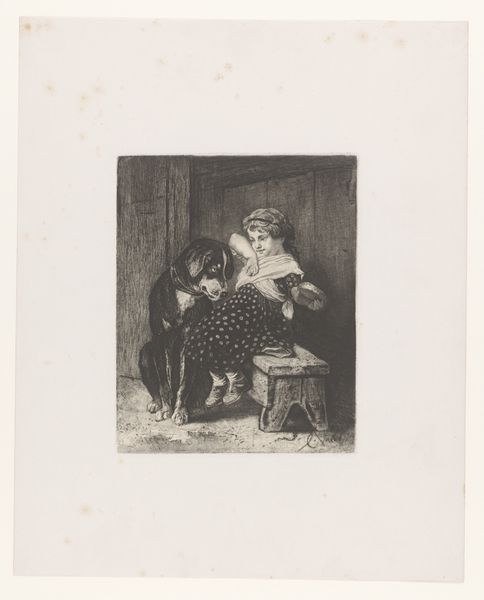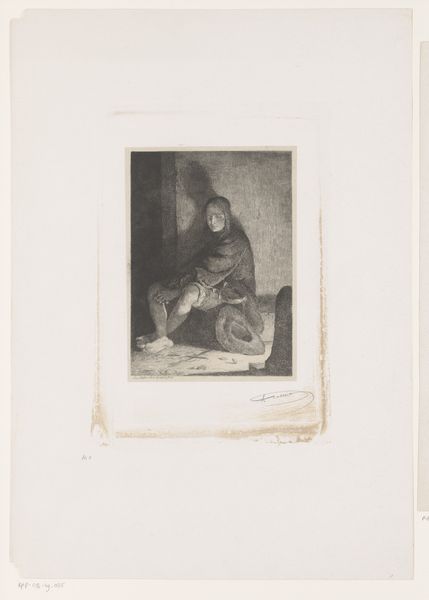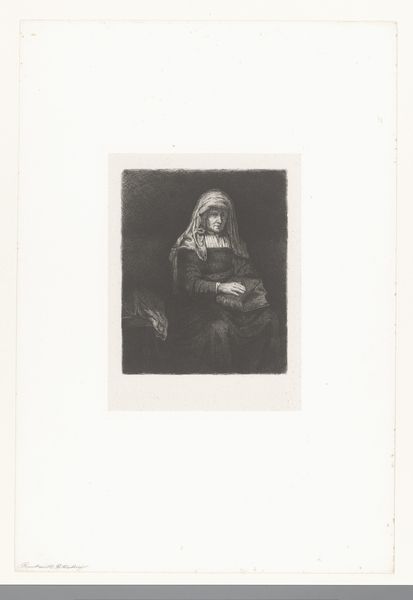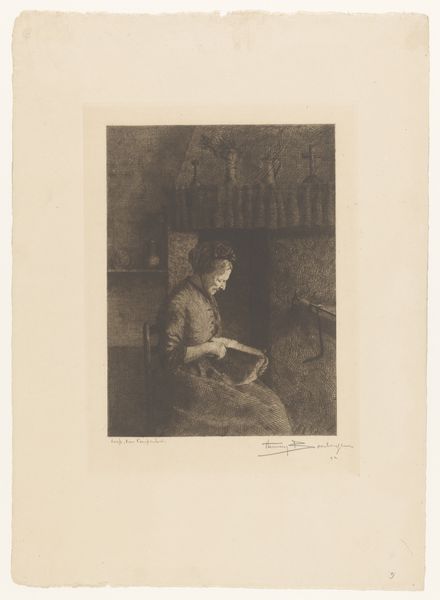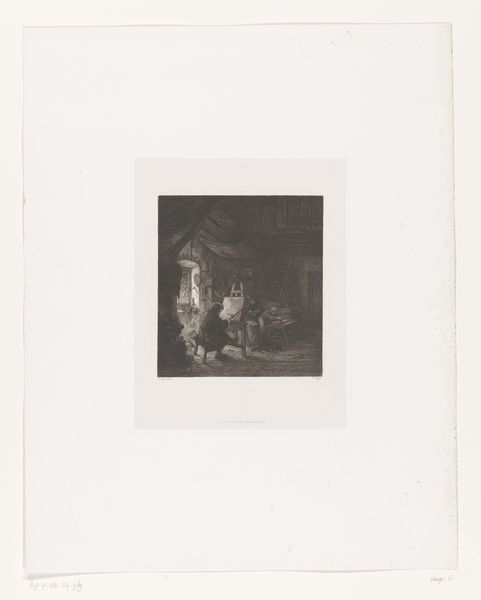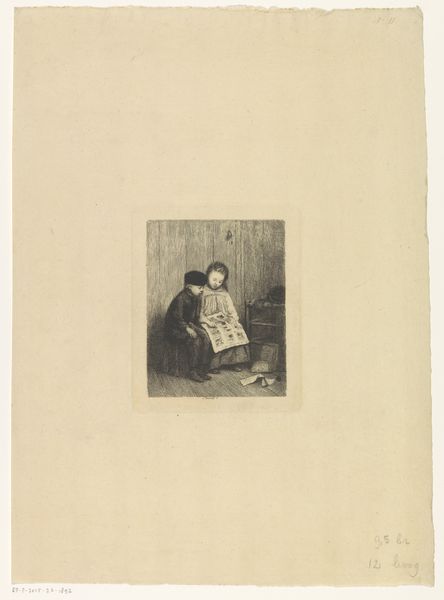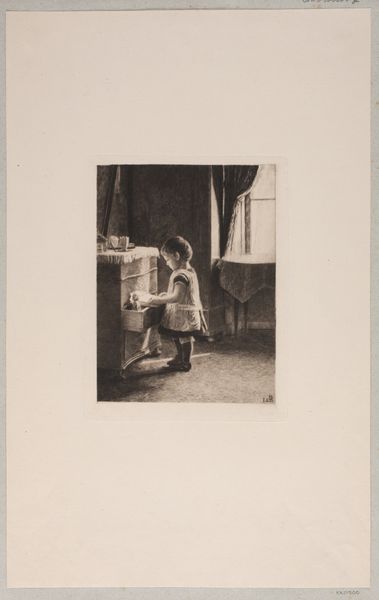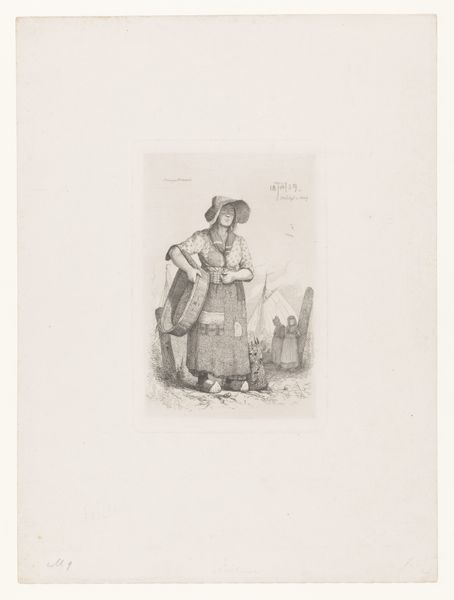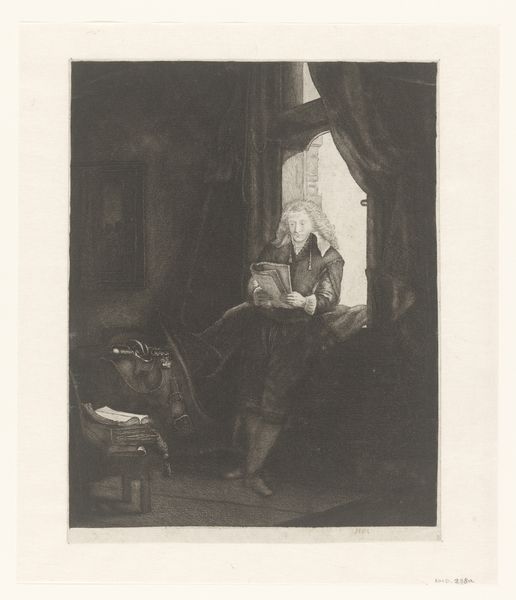
drawing, print, etching, paper
#
portrait
#
drawing
# print
#
impressionism
#
etching
#
sculpture
#
charcoal drawing
#
paper
#
genre-painting
#
realism
Dimensions: 187 × 131 mm (image); 240 × 159 mm (plate); 386 × 285 mm (sheet)
Copyright: Public Domain
Curator: Here we have Gaston La Touche's "Plate from l'Assommoir (blacksmith)," created in 1878, currently residing here at the Art Institute of Chicago. The work is an etching, drawing and print rendered on paper. Editor: The somber mood of the image struck me first. It's almost monochromatic and depicts a solitary blacksmith, with soft hatching defining a roughhewn physique against what I think could be the glow from a forge. Curator: La Touche made this work during the rise of Realism, when artists like Daumier and Courbet were interested in depicting modern life as it was, devoid of sentimentality or idealization. Zola's novel, "l'Assommoir," captured this movement through the harsh realities of working-class life in Paris, and artists responded with powerful imagery to communicate it all. Editor: Exactly. And looking at the figure's coarse apron and hands, his gaze directed intently at the work before him. It seems to tell the story of hard manual labor; this isn’t romanticized craftsmanship but honest work. I see also how the visible lines from the etching add a tactile quality to the depiction, emphasizing the materiality of the artisan’s labor. Curator: Right, this print engages the debates circulating at the time around industrial labor and its place within French society. The Blacksmith serves as an icon, burdened but vital, at a time when artisanal jobs began fading amid industrial expansion. Editor: So you think La Touche is commenting on class divisions or perhaps making a claim to the importance of respecting craftsmanship during the machine age? The way that the Blacksmith almost fades in the smoke suggests the slow and sad decline of these trades. Curator: Indeed. La Touche seems to engage broader cultural dialogues by questioning progress' cost and considering the human aspects threatened by it, echoing Zola's critical reflections on similar themes within "l'Assommoir." Editor: Well, seeing how closely it relates to debates then happening within Parisian circles really offers an added lens to its understanding today! Curator: It's fascinating how art becomes intertwined with the period's intellectual history. Thank you for pointing out these aspects.
Comments
No comments
Be the first to comment and join the conversation on the ultimate creative platform.

